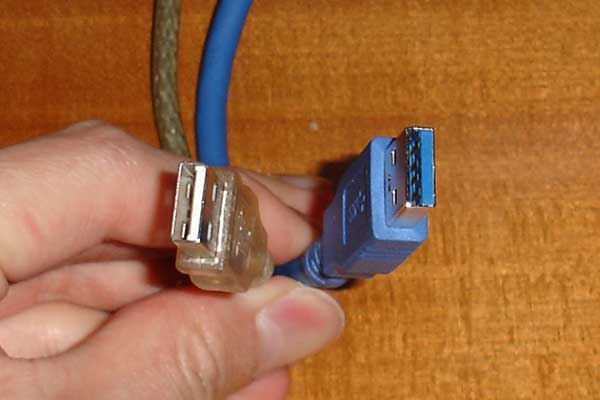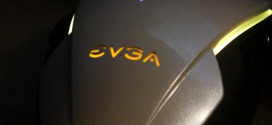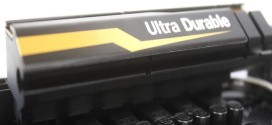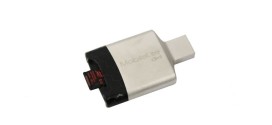USB 3.0 has theoretical 10x of the speed offered by USB 2.0. We put the speed to the test and was pleased and also surprised by what we find.
Introduction
USB 3.0, aka SuperSpeed USB, is poised to take over the current USB 2.0 and becomes the de facto standard in the computer peripheral connection. With the theoretical transfer speed 10 times of the speed of the USB 2.0, it is not hard to see why manufacturers are excited with the USB 3.0. The good news is that USB 3.0 is backward compatible with USB 2.0 so your existing peripherals such as printer, digital camera and flash drives will still work. Of course, your devices will still only operate at USB 2.0 speed.
Externally, it would be hard to tell much of a difference between USB 2.0 and 3.0 as the connector on your system (Type A) looks virtually identical. One thing that you can tell USB 3.0 apart from the older port is that it is often blue as the specification officially requires both the cable and the port to be blue color. Do not be fooled though, there are actually physical differences if you look at the number of the pins. The USB 3.0 adds four more connectors that brings a total of 8 connectors compared to the USB 2.0. The extra two sets of connectors are there to ensure the necessary bandwidth that is needed for the USB 3.0.
The end where you would connect to the USB devices (Type B) has a greater difference. There is an extra set of connectors. Although the base of the connector looks identically, USB 3.0 is a tad taller than the USB 2.0 connector. There is also a new micro Type B plug that is designed for small devices such as external hard drives and mp3 players..
What this means is that your existing USB devices will not work with USB 3.0 cable but your existing USB cable will still be able to work with USB 3.0 devices (but only able to run the device at USB 2.0 speed). However, you can plug in any USB 3.0 devices to your USB 2.0 board and USB 2.0 devices to the USB 3.0 board without any issue.
These extra pins and the modification ensure the USB 3.0 to have a greater bandwidth than the USB 2.0. The extra pins are there to provide additional lanes for data transfer. Think of it as the carpool lane that is dedicated only for devices that support USB 3.0 to travel. Data are being transferred with “Streams” where host and device can create and transfer multiple streams of data via a single bulk pipe. Furthermore, while the USB 2.0 broadcast packet traffic to all devices, USB 3.0 only establishes a communication pipe between the host and each device. [Wikipedia]
USB 3.0 also reduces some overhead and lowers the power consumption. The new power management feature will support idle, sleep, and suspend state so that the device can go into low power state when it is not being used. Furthermore, the bus power has been increased to 150 mA (50% over the USB 2.0). Once a device is configured, it can draw a maximum of 900mA compare to 500mA. As a result, more devices, such as hard drives or a camcorder, can be powered through the USB bus directly. It may even result in smaller power bricks for devices that need additional power.
While currently none of the chipsets support USB 3.0 natively, this does not prevent motherboard manufacturers from incorporating the technology into their boards via a third party chip. NEC is the primary supplier of the USB chip that is being incorporated into almost all of the current USB 3.0 products. Whether it is an USB 3.0 add-on card or a motherboard with USB 3.0 ports, the chip that is responsible for USB 3.0 transfer is from NEC. Intel has not yet officially announced their plans to integrate USB 3.0 into their chip but we expect it to be included in the next chipset revision. The latest AMD 890FX that was recently released is yet to include USB 3.0 into their chipset. So only time will tell when we will get a chipset that is natively supporting USB 3.0.
If you want the faster speed offered by USB 3.0, there is no shortage of products to choose from with Gigabyte taking a lead upgrading almost all of their current line up with USB 3.0. Asus also has incorporate USB 3.0 via add-on cards and including it into their notebooks. Case manufactures, such as Lian-Li also adds USB 3.0 port to their front panels. And if you shop around, you will also find other manufacturers selling add-on cards that you can easily install on your current board.
We have just received the Rosewill RC-505, an USB 3.0 add-on card, and RX358, a 3.5’’ SATA to USB 3.0 enclosure, that we are going to test to see the performance of the USB 3.0.
ROSEWILL RC-505
Rosewill’s RC-505 is an add-on card that plugs into the PCI Express x1 slot. The add-on is rather small and its low profile form factor would be ideal for anyone who wishes to use it on a low profile system. Rosewill even includes the bracket for it.
A low profile bracket is included, simply unscrew two little screws and attach the bracket will let you use the add-on card in your media center or small form factor case. On the back is where you will find two USB 3.0 connectors. As a standard, all USB 3.0 connector and cable should be blue.
A 4 pin molex power connector is provided to supply additional power in the even that your device draws too much power. We double checked with the Rosewill about the 4-pin molex power adapte and we were told that it is not absolutely necessary to plug in the connector. It simply provides additional power in case the devices you plugged into the port draws too much power, like if you plug in an USB hub with 4 hard drives that are powered from the usb bus and the PCI Express is unable to supply the needed power.
Rosewill ships the add-on card with a one page user manual, the low profile bracket, and the driver disk.
As mentioned, almost if not all, current USB 3.0 devices employee the NEC chipset. We can see here that the Rosewill add-on uses NEC D720200F1, which is the same chip that is found on the Gigabyte, Asus, or MSI board for the USB 3.0.
One thing we would like to mention is the available bandwidth that is being offered with various data interface on current motherboard:
| Interface | Mbps |
|---|---|
| USB 2.0 |
480 |
| PCI Express x1 |
2000 |
| USB 3.0 |
4800 |
| SATA 2.0 |
3000 |
| SATA 3.0 (6Gbps) |
6000 |
As you can see from the table above, PCI Express x1 has a lower bandwidth than the USB 3.0. This could potentially lead to a bottleneck. However, considering that mechanical hard drives are often the component that has the lowest data output, we do not think it will pose much issue. Now, if you plan to plug in SSDs or mechanical hard drives in a RAID configuration to the USB 3.0, then the limited bandwidth could potentially set a limit to your maximum throughput. Not that we envision anyone would want to do so, but it is something we would like to point out with a board or add-on card with USB 3.0.
How well does it run with USB 2.0 Devices?
We thought it would be interesting to see the performance of the USB 2.0 device when it is plugged into an USB 3.0 port. So we whip out the OCZ Throttle and fire up the HD Tach test. We choose OCZ Throttle instead of other USB flash drives because the Throttle is one of the fastest flash drive we have ever tested. Furthermore, the Throttle is an unique product where it has both USB and eSATA ports. Based on our previous test, we knew that the Throttle is able to perform better if it is plugged into an eSATA port, which indicates that the drive may be able to yield a faster trasnfer rate if it is not being held back by the USB 2.0 bandwidth cap.
| USB 2.0 | USB 3.0 | eSATA | |
|---|---|---|---|
| Burst (MB/s) |
35.1 |
40.4 | 99.4 |
| Average Read (MB/s) |
32.6 |
35.3 | 89.1 |
| Average Write (MB/s) |
22.9 |
25.1 | 28.6 |
| Random Access (MB/s) |
0.4 |
0.2 | 0.2 |
| CPU Usage (%) |
2 |
1 | 2 |
Our original thought was that the results would be fairly close and if there is any difference, it will not be a significant one. This is based on the fact that throughout the years with various chipsets, we haven seen that almost all USB 2.0 products shows little to no performance difference. The result provided by our Throttle drive took us by surprise. We were not prepared to see a 10% increase in the transfer rate with the Throttle plugged into the USB 3.0 port. When Throttle is plugged into the USB 3.0 add-on card, we observed faster transfer speeds across the board (average read, average write and burst speed). In fact, we also observe a lower random access time as well. The Throttle paired with the USB 3.0 probably breaks the real-world record (if not it would be in the top bracket) in the USB 2.0 flash drive transfer rate with 40.4 MB/s, 35.3 MB/s, and 25.1 MB/s transfer rate for the burst, average read and average write speeds, respectively.
Now, I know a lot of guys out there will say this is not totally accurate as the difference in the result can be attributed to the different chipsets. We agree, but often different chipsets will have a very small performance difference and Intel is probably one of the best chipsets in terms of USB performance. That is why we were quite surprised to find a 10% performance gain.
What you can expect from the USB 3.0 add-on card or on the motherboard is that your existing USB 2.0 devices will perform at least equal to and maybe even faster when it is plugged into the USB 3.0 port.
Rosewill RX-358
Let’s take a look at the Rosewill RX358. The enclosure is packaged in a rather nice box with black background to showcase the enclosure. On the back is where you can find the detailed specifications of the enclosure. You can see from the front image that there are two colors to choose from: black or silver.
Inside you will find the enclosure and the accessories that are packaged in a separate compartment to ensure nothing bumps into eachother and causes any damage. We received the silver color for review. In addition to the enclosure, you get a bag of screws, a quick and simple manual, the power adapter and the USB 3.0 cable. The USB 3.0 cable Rosewill includes is quite short, being only about 1 meter long instead of the common 1.5 meters length.
If you want a more eye pleasing USB enclosure, look elsewhere as the RX358 is not going to win you over. For me, I do not care too much about the looks of USB hard drive enclosure so I do not mind the plan silver boxy looks of the RX358. What is important to me is how well does the enclosure performs, its functionality, and its cooling ability.
The RX358 should excel in the cooling area. The whole body of the enclosure is virtually covered with aluminum with the exception of the two side panel that are made with plastic. This offers a good surface area to conduct heat; the biggest enemy for a hard drive. We also find a small 80mm fan underneath the hard drive. This is a very nice place to find a fan because it’s often where the hard drive PCB will be located. In addition, there are ventilation holes on the front of the drive covered with a metal mesh and a few ventilation holes on the back of the enclosure.

Opening up the top panel we got a peek at the internal compartment. Here you can find the 80mm fan and a small PCB on the back. Two cables leading off from the PCB board, one of them is for the fan and the other is for the blue LED light. We are glad that Rosewill uses a connector to connect the LED light power instead of soldering them onto the board because it makes it easier to disconnect them if the blue blinking LED light is a tad too bright that can be an annoyance to some.
A piece of plastic cover is used on either side of the enclosure. Remove it and you will see the cables that leads to the front LED.
Although all of the opening on the enclosure are covered with the metal mesh, the total area that is being exposed is quite large which means it would be very easy for the inside of the enclosure to collect dust. If you plan to use it in a dusty environment you may need to clean the enclosure routinely to be sure to have proper ventilation.
Due to the placement of the fan grill, when the enclosure is placed with the fan facing down, you will see it tilted at an angle. I am a bit surprised to find the enclosure lacks any stands or rubber feet to give it more grip to the surface. The enclosure appears appears is designed to be placed horizontally with the fan placed either facing up or down. The lack of a vertical stand means the enclosure can easily be tilted over if it is placed vertically.
We are glad to see a fan on/off switch on the back. In addition, you get the normal power switch, the USB 3.0 port and the power connector. One thing that is missing is some sort of security feature, such as Kensington lock, that is on some external enclosures we have reviewed. We do wish that the enclosure also comes with an eSATA or FireWire port for those who have yet to upgrade to USB 3.0 to use the drive.
We do not think that we need to dig into detail on how to install the hard drive as it’s pretty self-explanatory. To install a hard drive, you should remove the side panel where you can get access to the opening where you can fasten the screws to secure the hard drive.
testing and results
Testing Configuration:
|
System Configuration |
|
|
Processor |
Intel Core i7 920 |
|
Motherboard |
Gigabyte EX58-UD4P |
|
Memory |
3x2GB Kingston HyperX 1600MHz |
|
Hard Drive |
Seagate Barracuda Barracuda 7200.10 |
|
Graphics Cards |
Asus GTX 260 |
|
Sound Card |
Onboard |
|
Operating System |
Windows Vista Ultimate 64 SP2 |
We installed a Western Digital Green hard drive in the Rosewill RX-358 enclosure and test the transfer rate with HD Tach. The Rosewill RC-505 add-on card was installed in Gigabyte EX58-UD4P with the Core i7 920 processor.
| Rosewill RX358 (USB 2.0) |
Rosewill RX358 (USB 3.0) |
Internal SATA | |
|
Random Access (MB/s)
|
14.7
|
14.6 |
14.9
|
|
Burst Speed (MB/s)
|
35
|
122.4
|
224.9
|
|
Average Read Rate (MB/s)
|
34.8
|
64.3
|
64.3
|
|
Average Write
|
30.7
|
65.1
|
64.4
|
|
CPU Usage
|
2
|
2
|
2
|
USB 3.0 is finally able to yield good read and write performances that are comparable to the internal SATA’s speed. The burst speed for the USB 3.0 is slower than the SATA port; 122.4 MB/s vs 224.9 MB/s respectively. We believe this is due to the PCI Express x1’s bandwidth cap that prevents us from seeing the full potential of USB 3.0. We probably will continue to see such a bandwidth cap until the USB 3.0 is integrated into the motherboard chipset.
To show the effect of the PCI Express x1, we installed the OCZ Solid 2 SSD to the enclosure and ran the HD Tach again.
SATA 2
USB 3.0
We can see that the performance affect by the PCI Express bandwidth cap has a greater impact with SSD. While the SSD is able to achieve 194 MB/s burst rate when it is connected to the SATA port, it only reaches up to 160 MB/s with the USB 3.0. Again, the same result can be seen with the average read where once again the USB 3.0 only achieves 160 MB/s while the drive is capable of reading at 220 MB/s via SATA port.
Given too the fact that the expansion card and the enclosure are designed to work primarily with a mechanical hard drive due to it’s 3.5” design, we do not think that they will pose much issue.
Noise
One thing that bothers us a little is the fan noise on the RX-358. The fan noise on the Rosewill enclosure is a bit loud even with the mechanical hard drive installed. In addition, the fan makes a bit of rattling noise that sure will bug some people especially if you are using one of the Western Digital Green drives where it is quieter than other conventional 7200 RPM hard drives. Luckily Rosewill includes a switch where you can turn off the fan completely.
CONCLUSION
I am very excited with the performance of the USB 3.0. Finally we are able to take the advantage of the full transfer rate given by our mechanical hard drive externally. Our tests show that with USB 3.0, you can expect your existing USB 2.0 devices to work without any issue and still achieve the same transfer rate. What surprises us is that you may even get slightly better performance with USB 3.0 as our OCZ Throttle test shows.
The Rosewill RC-505 and the RX-358 provide a very good solution to those who need a faster data transfer rate to and from their external hard drive. There is not much fault with the RC-505 USB 3.0 add-on card except the PCI Express bandwidth limitation that we want to mention. As for the RX-358, it is a solid built 3.5” external hard drive enclosure with plenty of cooling. We do wish there are a few more connectors, such as an eSATA port or a FireWire port, and a quieter fan. Other than that, there is not much to complain about.
We think for people who are constantly using their external hard drive for data backup or storage, upgrading to USB 3.0 is a no brainer. It’s time to take advantage of the three to four time performance increase. For $39.99 (RC-505) and $59.99 (RX-358), you would be able to finish your job at a fraction of the time you used to with USB 2.0. As the saying goes, “Time saved is money earned“. The investment to the USB 3.0 should pay its dividend in no time.
One thing I am sure many of us hate to do is backing up data because of the time needed to copy the files. With USB 2.0, the time required is simply too slow because of the bus limitation. Now with USB 3.0, we can finally take advantage of the full mechanical hard drive transfer rate and back up our data externally. I think it’s time that I stop writing this review and start my data backup because now I have no excuse for not doing it.
| OUR VERDICT: Rosewill RC-505 | ||||||||||||||||||
|
||||||||||||||||||
|
Summary: If you often transfer data to an external hard drive, this little investment to the RC-505 USB 3.0 add-on card will provide valuable saving of time. |
| OUR VERDICT: Rosewill RX-358 | ||||||||||||||||||
|
||||||||||||||||||
|
Summary: Although the RX-358 may not be the cheapest 3.5” enclosure, its all aluminum body should provide plenty surface area to keep the internal hard drive cool. Pair it with any USB 3.0 would provide excellent performance that none of the USB 2.0 enclosure can compete with. |
 Bjorn3D.com Bjorn3d.com – Satisfying Your Daily Tech Cravings Since 1996
Bjorn3D.com Bjorn3d.com – Satisfying Your Daily Tech Cravings Since 1996

























